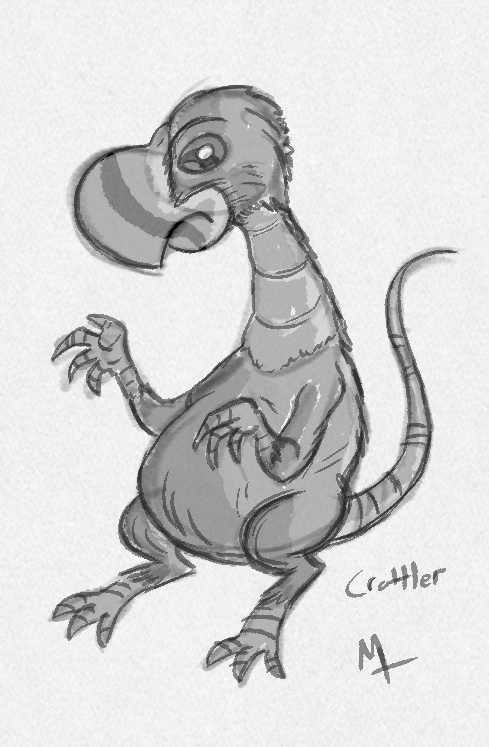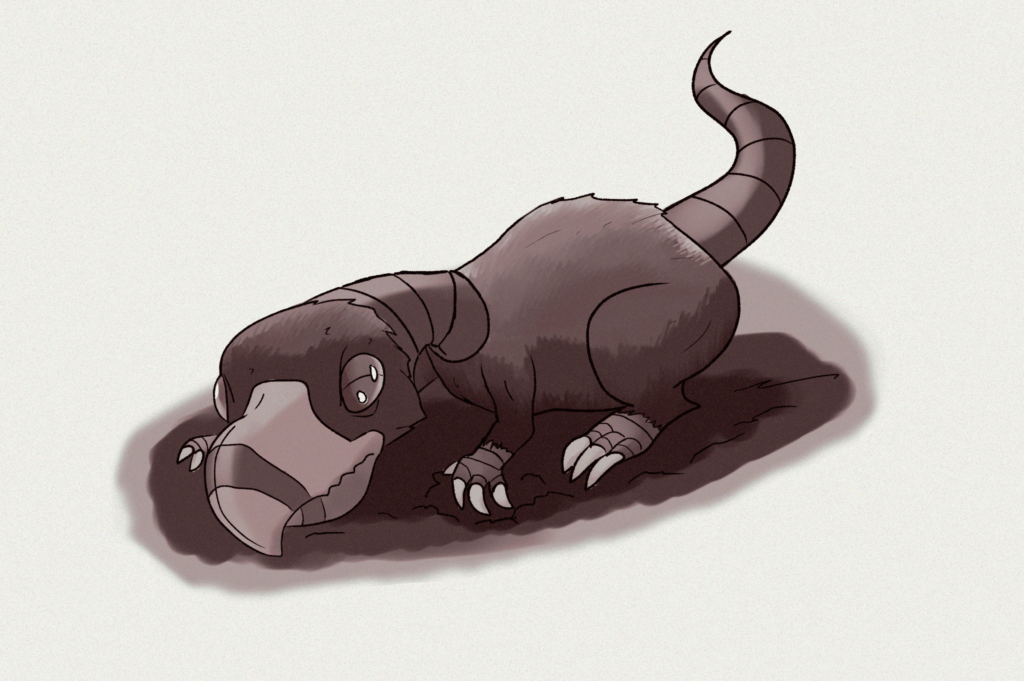The following is an entry in Meilo Thench’s ongoing fiction series Silver Spiral Archives – an in-universe series of writings by researcher Meilo Thench. The original version of this article on the alien rodent was published on Wattpad but has since been republished here and features corrections, enhancements, and internal links when relevant.
Comments are open for inquiries, questions, and corrections.


Nudriks are widely considered the most significant pests of the Silver Spiral Galaxy. However, the chittering, disease-ridden alien rodent Crattlers are often considered contenders for that position. Many citizens of the galaxy think them to be far, far worse. The similarity in the spread of both species has often made galactic citizens question whether space travel is worth enabling these beings to move from planet to planet.
Crattlers are small rodent-like animals measuring 15 to 17 centimeters in length from snout to tail-tip. They are generally quadrupedal, known to utilize their forepaws to manipulate their environment and for defense. Their most distinctive feature is their large, oversized snouts. These snouts resemble a crushing beak wrapped in a layer of fur with distinctive striping.
The Crattler snout is not an actual beak. It is an incredibly densely-muscled jaw that can reach a bite force of up to 1,500 PSI. The distinctive muscle at the top of the jaw forces the lower jaw to “snap” up. This provides the biting motion. The upper jaw in mastication remains completely still; instead, the lower jaw contracts due to a muscle twitch. In a sense, rather than bite down, Crattlers bite up. Additionally, their biting motion bears more similarity to an underside sawing. The lower jaw features rows of tiny, blade-like teeth.
A Hardy Survivor
The eyes of this alien rodent, unusually for a predatory species, are on the sides of their heads. The snout is so large that front-facing eyes are constantly obscured. Crattlers’ strong neck muscles allow them to twitch their heads constantly as they move, allowing them to take in their surroundings. This twitching motion has another side effect. Crattler scampering features rattling sound as their teeth, which they shed near constantly, rattle around in the pronounced jaw cavity. A Crattler generally goes through 10-20 teeth daily, which grow back within a week. This constant tooth loss is associated with the forceful snap and sawing of the jaw.

Crattlers are generally scavengers and have found great success in living in the refuse of modern society. However, this exposure to refuse also makes them exceedingly common vectors for disease and illness. Crattler bites are generally associated with the phenomenon of Crattler’s fever, more commonly known as “the cratts.” This disease varies between species, but for most, there is a painful infection and heavy fever. This, of course, is a topic deserving of its discussion for another time – the alien rodent has proven to substantially impact the collective biology of the galaxy in the form of xenoimmunology studies.
These alien rodents are found at sites of death and decay. Crattlers are particularly interested in scavenging corpses. During the aftermath of some battles in the Dividing War, Crattler populations swarming battlefields were suggested to be so large that the areas resembled a churning sea of fur and teeth. Crattlers are particularly common in tombs and graveyards as well. Naturally, all of the exposure to decay and rot contributes to their reputation as disease vectors.

Sizes and Variations
Sizes of Crattlers vary depending on the diet and competition. Most of these alien rodents are small. They measure around 15 centimeters. Yet, larger sizes have been documented. Some Crattlers have been found measuring just over a meter in length in areas with a great deal of wilderness and few natural predators. Recorded sightings of far larger Crattlers, some even up to .5 to 2 meters, exist. The remains of the largest Crattler ever slain on record, standing at 2 meters, are in the Bovari Planetary Museum of Bovari III.
Crattler colonies will often adapt to conditions on worlds where they nest, resulting in countless variations in the core species. Some variations have so far deviated from the norm that they are genetically incompatible with most other Crattler variations. Thankfully this suggests it is impossible to breed a super-crattler – a terrifying notion.
These rumors of giant Crattlers have led to the curiosity of spacer and colonial stories concerning Werecratts, or massive, sentient, and bipedal Crattlers. No such evidence of Werecratts exists, but generally, the further one travels from the core systems, the more likely one is to hear tales about Werecratts in the woods or hills on dark, silent nights.



